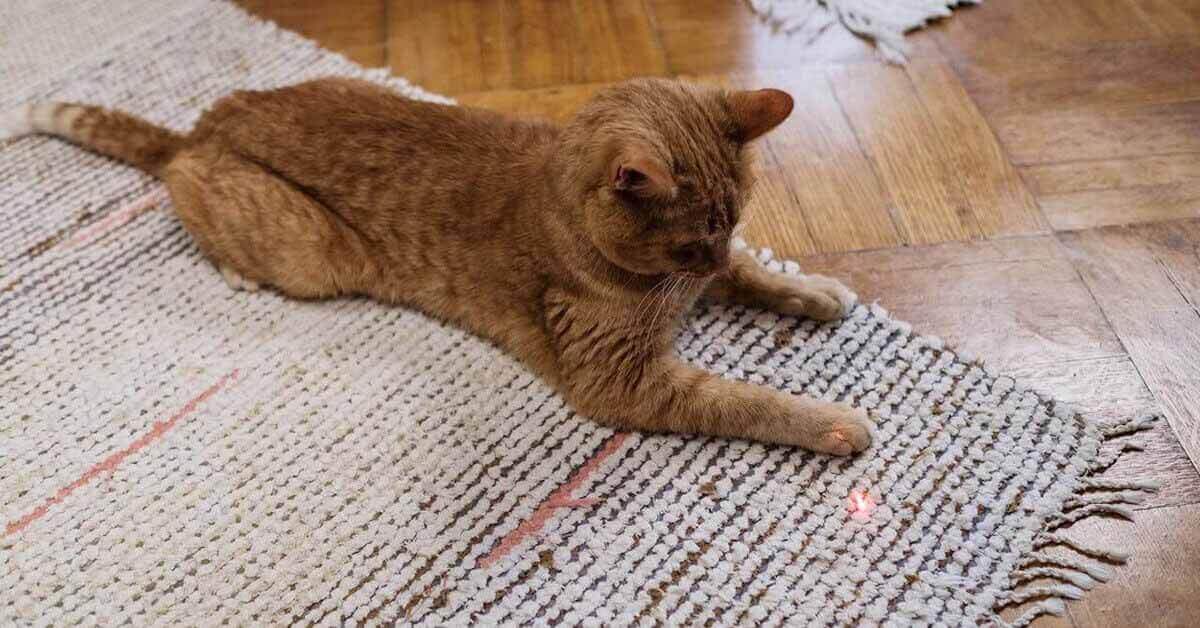Try These 5 Things if Your Cat is Not Interested in Toys
Some cats absolutely love every single toy you bring them, while other cats are not at all interested in toys.
And yes, we’ve all been there with our furry babies and their (dis)interest in toys.
So what can you do about it?
We’ve got a few things to show you, so your cat will engage in playtime and never be bored again:
Cat Not Interested in Toys – Key Takeaways
- Understand your cat – it is key to know what your cat likes and dislikes, so that you will know what kind of toys to bring them
- Types of toys – there are a plethora of toys out there you can try with your cat, all helpful in a variety of ways
- Interactive playtime – this will help strengthen the bond between you and your furry baby, while keeping them engaged in active playtime regularly
- Upgrading your environment – stuff like cat trees and tunnels can help a lot in having your purry baby play all day long, spending that excess energy in the process
First Things First – Understand Your Cat
Our furry babies’ interest in toys can be influenced by several factors, which include age, health, and personality.
Let’s start off with age, as kittens are usually the most playful and energetic ones. Older cats may prefer to relax and lay down in random spots during the day, so they need fewer toys to play with. As cats get older, their energy levels decrease naturally, and they might not be as interested in toys as they were when younger.
In terms of health, it greatly affects the cat’s willingness to play. If your cat doesn’t play with toys it might mean it feels unwell or is in some sort of pain, and that is why it may not be interested in playtime activities. Regular check ups to the vet are vital here to ensure that, first, your cat is in good health, and second, you identify any issues that might affect its playfulness.
Lastly, personality. Cats have various personalities, just like us people, with some cats naturally more playful and curious, while others more calm and reserved. What you need to do is understand your cat’s personality, as this will certainly help you gauge which toys will match its preferences or what kind of play activities you should engage in.
Moreover, oftentimes we see toys get broken, torn, or dirty and this might be another reason why your cat doesn’t play with toys. It is equally important to maintain your cat’s toys and frequently replace them so they can enjoy their playtime activities with new and varying toys.
🐾 When you consider these factors, you’ll gain a much better understanding of what might influence your cat’s interest in toys, and help you find the best ways to play and keep them happy.
How to Entertain a Cat That Doesn’t Like Toys
Before deciding to throw out all toys, just because your cat doesn’t like them, first try out these alternatives:
- Interactive Toys
- Puzzle Toys
- Catnip Toys
- Balls & Chasing Toys
- DIY Toys
After that, try spending more quality time with your cat by playing with it yourself, although be wary of scratch marks. My husband loooves to play with our Kiki and she adores him and their playtime together. BUUUT, his hands and arms are always scratched. The best thing is, he doesn’t mind it as he loves spending time with Kiki.
Next, you can always use a feather wand or a laser pointer, but do keep track of your cat’s interest. Ours, for example, plays all but 2 minutes with a laser pointer until she loses interest in it. We had the same question “why doesn’t my cat play with toys” and found out that Kiki plays with different toys in a different manner. That said, small springs have proven to occupy Kiki for hours, and by hours we mean literally 2 to 3 hours, at least.
Another good alternative would be to combine nylon tunnel tubes and chase her in and out of those. These are a really good combo for Kiki, and we often throw balls inside those tunnels and she just plays along.
With that in mind, there’s a plethora of activities you can engage in to have your kitty or cat happy and playful.
Let’s dive into some of the most common ones you should introduce to your cat.
1. Interactive Toys
These can be any type of toy that makes noise or moves as it can capture your cat’s attention. That means, laser pointers, feather wands, self-moving balls, or infallible objects may engage your cat in active play.
2. Puzzle Toys
Puzzle toys are some of the finest toys for cats that don’t like to play as it has a reward-type system. These types of toys can challenge your cat’s mind as it rewards them with treats. Treat-dispensing balls or puzzle feeders, for example, can keep your cat mentally stimulated as well as very active throughout the day.
3. Catnip Toys
Many cats get naturally attracted to catnip, which can make playing with toys all the more exciting. You can buy catnip in the form of spray and sprinkle it on balls or soft plush animals and your cat is going to go nuts on them. Additionally, there are also catnip-filled balls or mice-like figures that can also encourage playfulness in cats.
4. Balls & Chasing Toys
Small and lightweight balls, rolling toys, or similar little objects are one of the best toys for cats. Try playing with your cat using a variety of these combinations to see what peaks their interest. Chances are, even a crumpled piece of paper can stimulate your cat and shift it into hunting gear.
5. DIY Toys
Oftentimes, the simplest toys can be the most effective. DIY toys like a crumpled piece of paper, a cardboard box, or a small spring from a plastic item can catch your cat’s interest. Our Kiki enjoys playing with cardboard boxes and small springs and she can do so all day long.
🐾 Always aim to introduce a variety of toys and playtime activities to see what catches your cat’s interest, then build upon those, and ensure you’re mixing toys and activities to keep your furry little baby engaged for prolonged periods.
Try Interactive Playtime if Your Cat Doesn’t Play with Toys
Engaging your cat in quality interactive play can help stimulate their interest and provide very valuable mental and physical exercise.
To do this, start by using toys that actually mimic real prey and move those toys in a way that would mimic the behavior of smaller animals. This can be sudden movements and pauses, quick sprints, or hiding patterns. You can use feather wands or smaller toys attached to a string and then move them all around and especially under blankets or other materials.
This is one of the best ways to understand your cat, especially when you’re puzzled with questions like “why my cat doesn’t play with toys”, as it further reinforces the bond between you and your furry baby.
When you want to engage in this type of activity, make sure your cat is in a playful mood. Aim for those times of the day when your cat is most active and try to match their energy levels. Always try to vary the activities and rotate the toys you use to confuse your cat and have them focus as much as possible.
Last, but not least, be patient and give your cat enough time to warm up to these activities. From then on, adjust the pace and play type according to yours and their preferences. The point with this interactive playtime is to strengthen the bond with your furry little baby and keep them healthy and entertained as well.
Try Upgrading the Environment if Your Cat Doesn’t Play with Toys
Ultimately, when you don’t know what to do if your cat doesn’t play with toys and you’ve tried out all options, try this on for size – upgrading the environment.
This means creating an environment that can encourage your cat to explore around and play. Here are a few options to consider for this step:
1. Climbing Structures
Add cat trees or shelves to walls to see if your cat likes to climb and enjoy the view from above. This would allow them to observe their territory and be confident of their safety.
However, some cats may not like to climb up high, like our Kiki, as we added shelves to one wall and while she enjoys laying on top of them, we have to manually put her there as she doesn’t climb them up herself.
Climbing structures are among the best ways on how to get your cat to play by itself and it encourages them to hone their hunting instincts and sharpen their hunting tools.
2. Scratching Pads & Posts
These are standard practices among purr-ents as we often want to give our furry babies some much needed scratching surfaces. After all, we love our furniture and want it intact, right?
To do that, either get some scratching posts or attach scratching pads to your favorite sofa, chair, or other furniture. If you’re still wondering “how to get my cat to play with toys”, then try these next few alternatives.
3. Hideaways
For this, you can use boxes, nylon tunnels, or any other form of space with blankets that would allow your cat to jump in and around those.
We have connected 3 tunnels together and placed them in our hallway and Kiki always runs through them, often scaring me by jumping out of one side.
4. Window & Balcony Views
To prevent cat boredom, make sure to place some laying surfaces next to your windows or balconies. Although be wary as cats can’t accurately estimate the height and may jump when they see a bird fly by, so if you’re living in a higher apartment and have a balcony, make sure to kitty proof it.
🐾 When you mix together these few upgrades into your home, you can instantly create a more playful space and a more engaging environment for your furry baby to enjoy itself.
Final Remarks
There is no one-size-fits all solution when your cat is not interested in toys. It all depends on your cat’s personality and activity levels.
That said, there are various ways to engage in playtime with your cat as we have outlined above. This will strengthen your bond as well, and keep your furry baby active and healthy at the same time.

